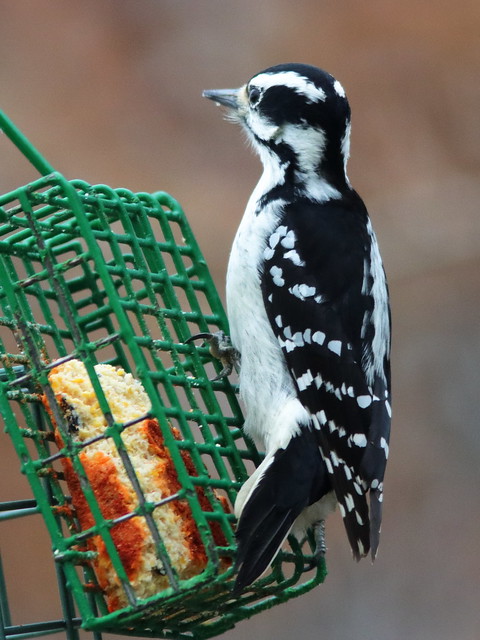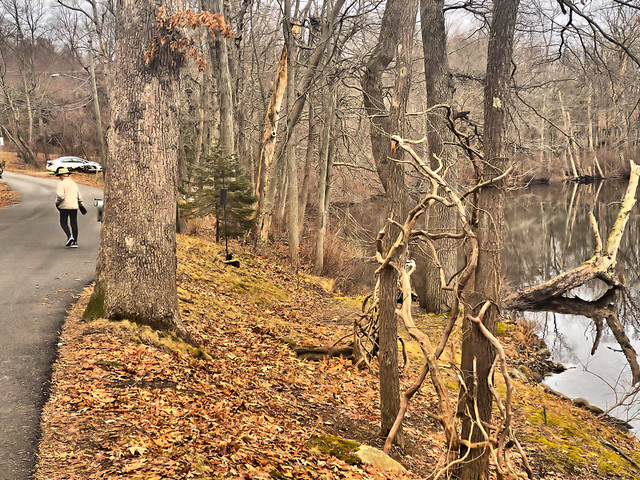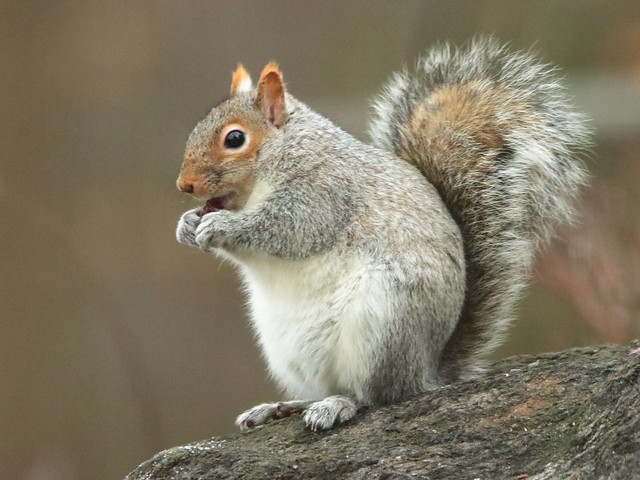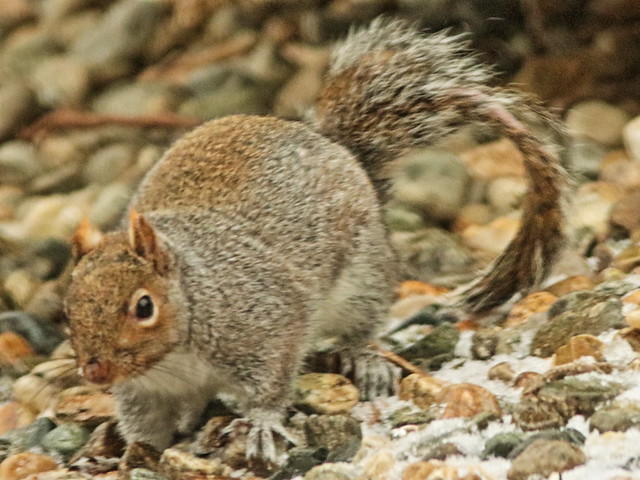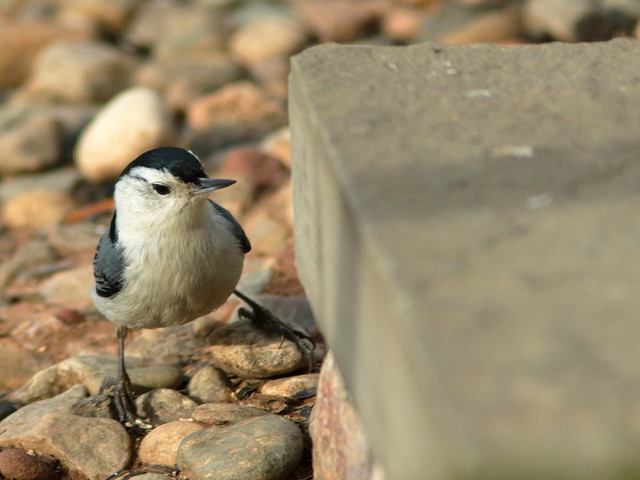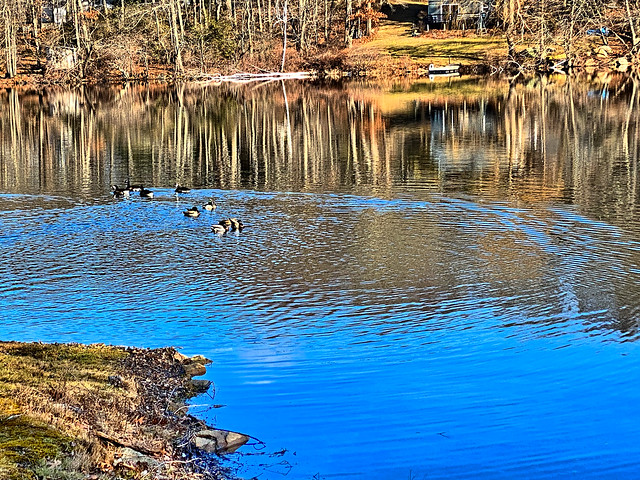Chilly, windy and gray days have discouraged outside activities. Poor light presents photographic challenges, especially when most of my wildlife subjects are in the deep shade outside our north-facing window.
As if to complement my earlier discussion about the similar plumages of the Downy and Hairy Woodpeckers, both made appearances on January 22. The male Hairy Woodpecker arrived first and dwarfed the suet feeder:
The female Hairy was waiting on a nearby branch and flew in immediately after the male departed:
Note the female's head pattern:
The male Hairy Woodpecker's head has two red patches, above the horizontal black stripe:
The male Downy Woodpecker arrived only few minutes later:
Its single red occipital patch covers the vertical stripe:
Two Eastern Bluebirds showed up briefly and did not visit the suet. We see them occasionally during the winter, usually in small flocks of 5 to 8. This was the male. The images are particularly poor, as I had to shoot at an angle through the double window pane:
Dark-eyed Juncos dominate the area but prefer to forage on the ground under the feeders. These are male and female juncos:
I spread some millet seed in a few natural "shelves" in the granite ledge to attract other ground-feeding sparrows. Song Sparrow:
White-throated Sparrow:
Our granddaughter spotted this Red-tailed Hawk from an upstairs window and texted me. It was down in the area below the fence and I could not see it from our perpective, so I ran up and photographed it from the upper patio. It was quite distant but at least there was no window glass to interfere:
We saw it again during our walk along the lake shore. I think they had a nest near this spot last season:
On the mammal front, January 21 was Squirrel Appreciation Day. I obtained this window view of a Gray Squirrel a day later:
The Red Fox continues to chase the squirrels and we saw it appear to catch one just as it started to climb up a tree. However, the squirrel may have escaped its clutches, as this one showed up a few hours later, missing a lot of fur from its tail and evidencing other signs of fresh injury. We never saw this individual again, which may be a bad sign:
The fox surprised me (and probably the squirrels) by showing up just outside our door. It was looking straight at me, but after I grabbed my camera it turned and started running away. I obtained only one exposure, standing about two feet inside the window. It was so close that it did not fit in the frame:
The fox returned on January 24 to look for squirrels after the snowfall. He found none but our Ring camera recorded his visit (best viewed full screen):
There was an unusual pink sunrise on January 19. The color suffused the landscape-- photos do not capture its depth.
"Pink symbolizes youth, good health, and playfulness. It’s the flush of first love and stands for nurturing femininity. It’s used as the symbolic color of the movement to support breast cancer research, and we think of pink as an innocent, cheerful color." (Symbolism And Meaning Of Pink)
Only the evening before, our beautiful, talented and so lovely niece lost her long and courageous battle with breast cancer. She was a very successful entrepreneur, had many friends in business and entertainment sectors, a world traveler who advocated for early detection and treatment of breast cancer. Her spouse was so loving and caring. I cannot imagine the pain he is suffering at her loss.
This Week's Header: Pink Sunrise
= = = = = = = = = = = = = = = =
My Corner of the World
________________________________________________
Please visit the links to all these posts to see some excellent photos on display
________________________________________________


